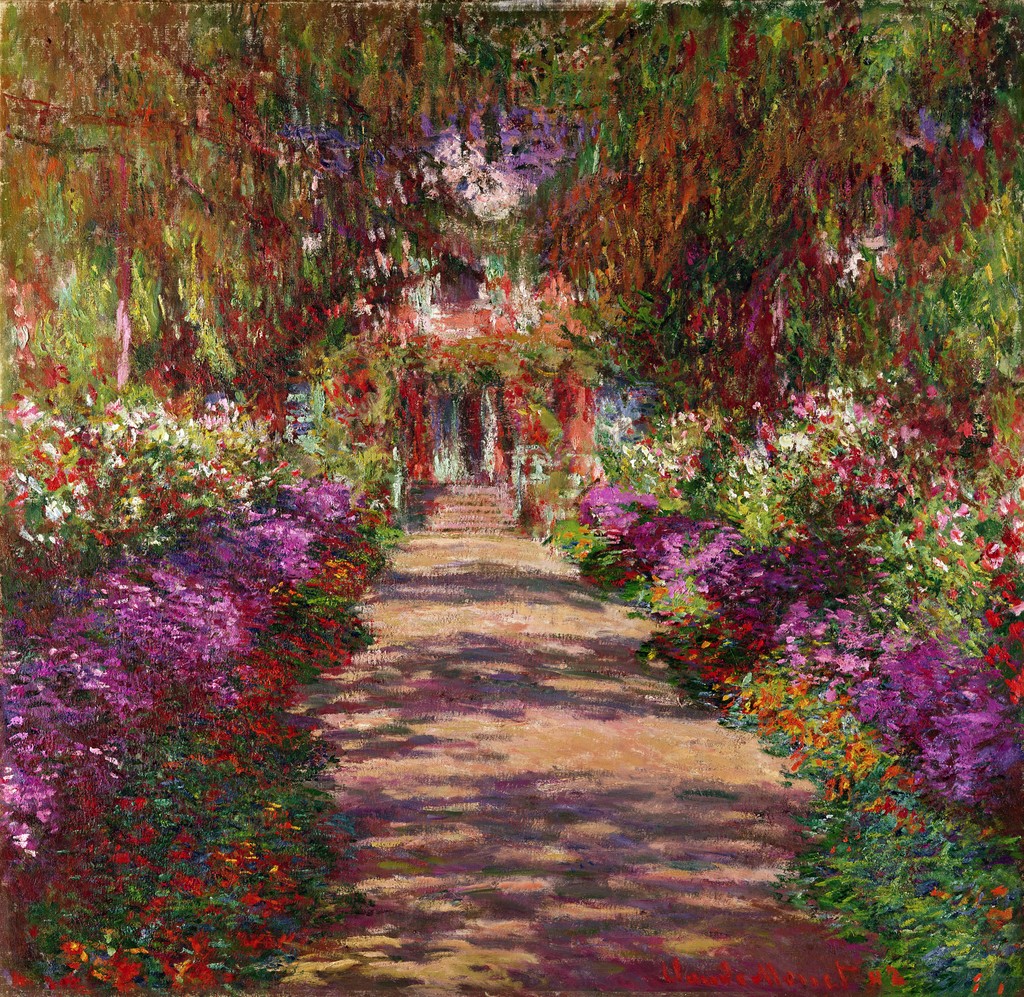August 2012 - Giverny France
We sailed from Conflans at 7:15PM last night and arrived in Vernon during the night.
This morning, we can choose between a guided visit of Claude Monet's house and beautiful gardens in Giverny OR a visit of Chateau de Bizy with its magnificent courtyard. Then, spend some time taking a stroll around this delightful town on your own before your ship departs for Rouen.
We chose to visit Giverny! The buses left at 8:30AM.
Located 80 km west from Paris, at the gateway to Normandy and 4 km from the town of Vernon. It is located on the right bank of the River Seine, at its confluence with one of the two branches of the River Epte lined with willows and poplars.
For a complete biography of Monet this is an excellent site.
As part of a river cruise tour you always have the best tour times. We arrived at the Monet's garden around 9AM and had a tour of the gardens before the house was open to visitors.
When Claude Monet first moved to Giverny in 1883, it was in the wake of a personal tragedy. The artist’s friend and mentor, Edouard Manet, had just died that very day. Moreover, Monet’s wife, Camille, had died five years earlier. But although these and other tragic events occurred at Giverny and shortly before, Monet continued to find inspiration for his paintings from the surrounding countryside of Giverny and his own gardens which he was constantly creating and expanding upon.
When Monet came upon the property where he would eventually live, he was overtaken by the charm of the pink stucco farmhouse and the nearby river. The house was situated on an abandoned cider farm and the apples trees were in blossom. Fortunately, the owner of the property agreed to rent the farmhouse to Monet. It would be another seven years before he was able to purchase it himself.
Soon after Monet set up house in Giverny with his two young sons and his companion, Alice, and her six children, he began to create two beautiful flower gardens. As one of the key artists of the Impressionist movement, Monet enjoyed the outdoors and especially flowers. At first, he planted a modest garden with simple flowers but as his skill improved and his satisfaction increased, his gardens increased in complexity and variety. In 1890, Monet began to create his famous Japanese water garden. He diverted a nearby stream to create a pool and planted water lilies in it. He surrounded the pool with trees and plants and constructed a bridge across the pond.
The gardens are divided into small spaces enclosed by hedges which constitute as many little "worlds". Each of the greenery rooms has its own harmony of colours and shapes.
As it was not yet open to visitors we had an opportunity to view it from afar without any people in our way.
This painting by Monet was done in 1902 and is titled A Pathway in Monet's Garden, Giverny.

After this view of the house you then walk through the gardens to the Japanese bridge and the water lily ponds.
The water lilies (Monet's most famous paintings) were in bloom and would open shortly as the morning grew on.
We meandered up to visit his house. It is small, no photographs allowed except from an open window upstairs. No tour guides are permitted either.
The very yellow dining room.
The very blue kitchen.
From the open window and yes, Blue Dress was in every one of our photos as she was snapping her husband's photo in the window. They were honeymooners on our boat and he cut in front of me in a line at the reception the day before. When he realized he turned and said "oh were you here first?" and I said "yes, you just arrived" to which he said "oh, ok" and went ahead of me anyway. To which the woman behind me said "and what part of that didn't he understand?".
Monet in his garden.
Some photos from outside his house.
The gift shop was one of the nicest I've seen. I bought a box for my collection and a framed print.
A few more floral photos.
The village consists of two streets on the hillside lined with low houses in a pink or green roughcast with slate roofs, their walls covered with wisteria and Virginia creeper. These streets are crossed by narrow lanes running down the hill. The Claude Monet Road runs straight to the village. The "Chemin du Roy" follows the banks of the River Epte. Claude Monet's house lies between the two roads.
He would stay in the village until his death.
Monet died on 5th December 1926. He was buried in the family vault near the village church.










































Lovely post. I did a river cruise some years ago on a little bit smaller boat and so enjoyed Giverny. I still have this cute wee jug I bought in the shop there.
ReplyDeleteHave a lovely week.
le sigh. beautiful.
ReplyDelete